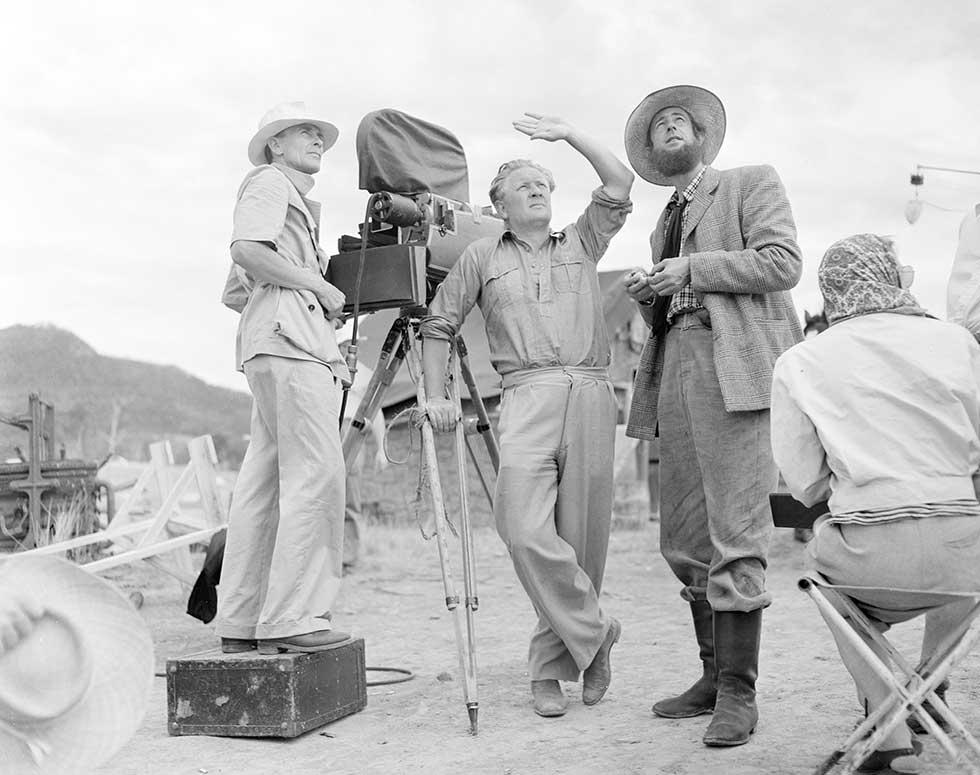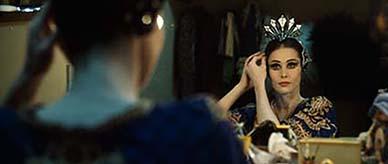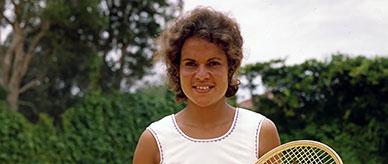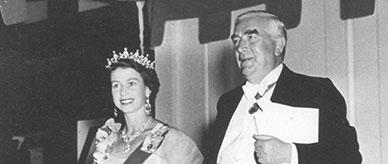


About this record
This is a black-and-white photograph of three men, George Heath (left), Chips Rafferty (right) and a man in the centre captioned only as 'Haring', who may be Harry Watt, the film director, standing near a cine camera looking upwards and into the distance. A woman sits on a folding stool in the foreground.
Educational value
- Was taken on the set of one of Australia's first successful feature films following the introduction of 'talking pictures' in the 1930s – Eureka Stockade was a black-and-white 16-millimetre film of 103 minutes duration released in 1949, that starred Australian and English actors such as Chips Rafferty, Peter Finch and Gordon Jackson; it was a major production for Australia, with some 70 speaking parts and several hundred extras, most of whom were recruited from the army; 800 costumes were required.
- Shows the Australian actor Chips Rafferty (1909–71) in costume as Peter Lalor – the film told the story of the only armed rebellion in Australia's history in December 1854 following widespread opposition on the part of gold field workers (known as 'diggers'), led by Peter Lalor, to the issuing and enforcement by the government of miner's licences.
- Shows some of the major personalities in the early development of the Australian film industry – Chips Rafferty starred in at least 24 Australian feature films between 1939 and 1971; George Heath, director of photography for Eureka Stockade, is listed as a cinematographer or director of photography in many Australian feature films and documentaries made between 1935 and 1958.
- Provides an example of collaboration between the British and the Australian film industries – Eureka Stockade was one of three films produced in Australia after World War II by Britain's Ealing Studios with director Harry Watt.
- Highlights a film that stimulated international interest in Australia as a subject for filmmaking – at the time, Australian films were of little interest to the Australian public and the Australian film industry received little support from the Australian Government.
- Displays a type of cinecamera used to make feature films in 1948 – in this photograph the film reels are protected from the light and elements by a cloth cover.
Acknowledgments
Learning resource text © Education Services Australia Limited and the National Archives of Australia 2010.
Related themes
Need help with your research?
Learn how to interpret primary sources, use our collection and more.



